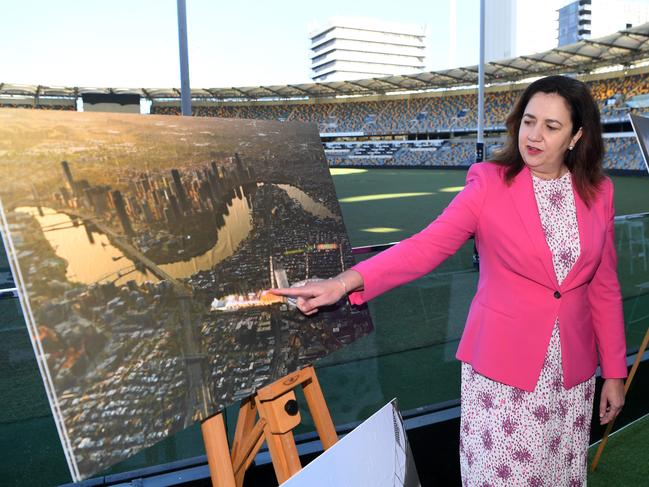Housing, transport nightmare as Queensland faces massive influx
New figures have highlighted the scale of a problem barrelling Queensland’s way, with the Gold Coast set to be among the areas worst affected. FULL DETAILS
Opinion
Don't miss out on the headlines from Opinion. Followed categories will be added to My News.
“Beautiful one day, perfect the next.”
It’s the slogan that perfectly encapsulates what it means to live in Queensland.
But are we on the precipice of a major change, in which the future is less bright, when the next day is not quite as good as those just gone by?
A graph released by the Australian Bureau of Statistics (ABS) on Monday would suggest that keeping Queensland beautiful is going to be increasingly challenging.
It shows population shifts across Australia. And Queensland sticks out like a sore thumb.
Uniquely among every state and territory, only Queensland is showing a major rise in interstate migration.
Its overall population growth is far ahead of any other eastern state.

It’s not new, but the figures are stark.
The latest ABS estimates have Queensland’s population at 5.296 million as of March this year – a rise of 1.8 per cent on the year before.
That’s double the national average, and triple the growth in New South Wales and Victoria.
Indeed, if present trends continue, the population here will overtake Victoria within 20 years.
The implications are huge, and not just for housing.
It’s hard to envisage a situation where roads in Brisbane and the Gold Coast can accommodate all these extra people without grinding to a painful, Sydney-esque halt.
Extraordinary investment will be needed to prevent such an outcome.
But even if that’s possible, what will it do to the areas we all love?
Massive population growth on the northern Gold Coast has made the Coomera Connector a necessity. But building that road has the potential to wreak havoc on wildlife, and the communities it will pass through.
Little wonder it’s being delayed as the state government works through environmental issues with their federal counterparts.
Happily, many of the people heading here for work are medical professionals, but the health service, too, will need major upgrades.
It’s only eight years old, and a wondrous institution in so many ways, but already the Gold Coast University Hospital looks far too small for the population it serves.
Against all this, Cross River Rail looks like a farsighted investment – but only for Brisbane.
Indeed, given it will cut off the Gold Coast’s direct rail access to the capital’s airport, it may even be bad for this city.
Yes, there will be a couple of extra stations here, but the line will still terminate at Varsity, same as it has since 2009, when the city’s population was a good deal smaller.
In the next ten years, there will be a lot of focus on getting Brisbane match fit for the Olympics.
Already, remarkable stories are being bandied around about vast sums that may be spent adding a couple of extra seats to The Gabba, calling into question the fanciful notion that the state might break even on the global sporting jamboree.

But in truth, this state faces bigger issues. Our sporting and tourism infrastructure is already impressive – if we had to host the Olympics tomorrow, we’d probably do a half decent job.
The real focus, the real investment, needs to be in securing the future of the people who will still be here long after the Olympics leave town.
That mooted Gabba spend could go a long way to extending heavy rail to Gold Coast Airport, for example – a project that looks ever more important with every passing day, and every new ABS report.
The state government will next month host a housing summit – a very necessary and welcome development.
As population surges though, it’s not just housing that will come into sharp focus.
This state is facing extraordinary change. It may be time the state government’s strategy got a radical reboot.
It’s great to see Queensland surging ahead, but we need a very clear and focused plan if we’re still going to be able to say, “Beautiful one day, perfect the next”.





